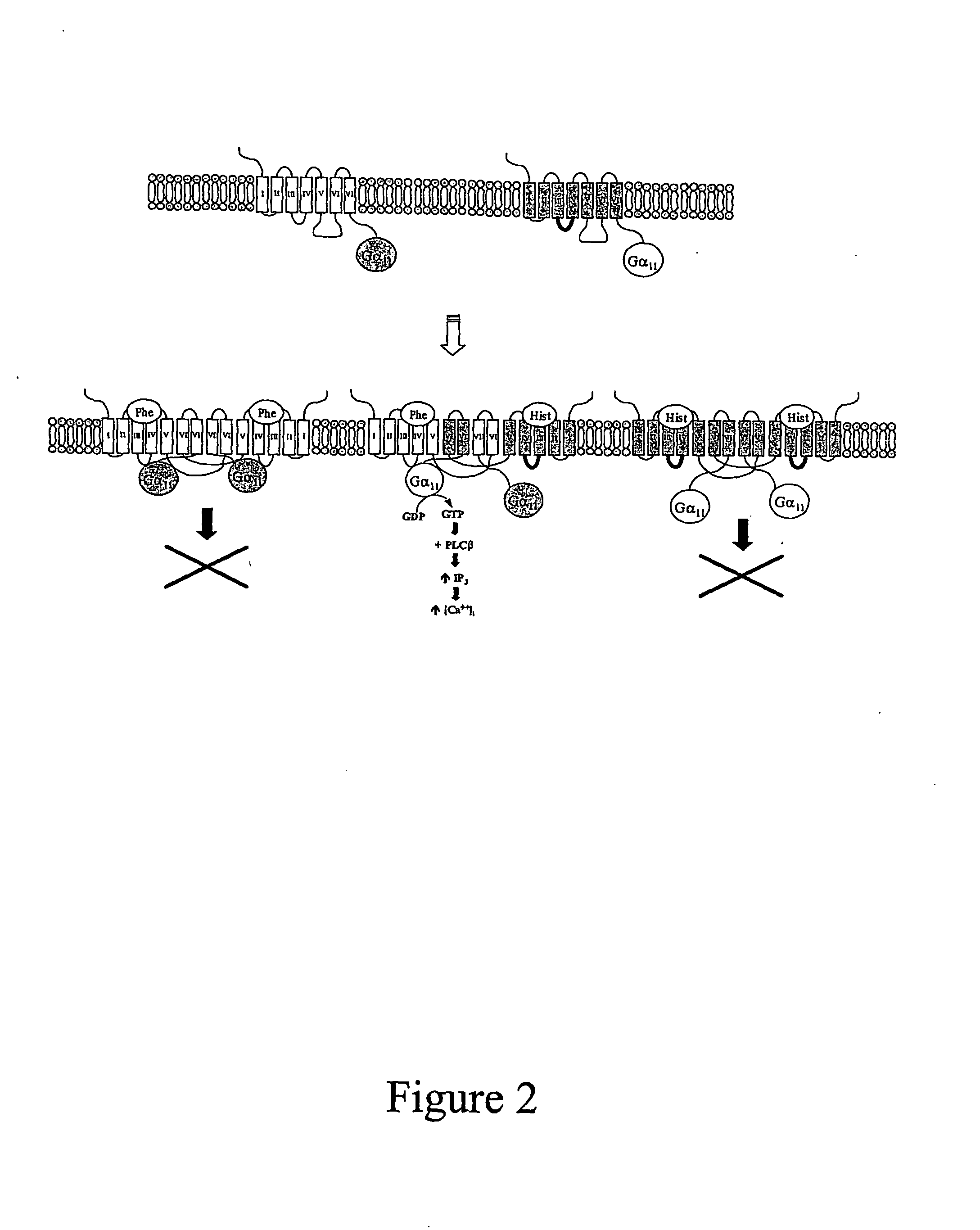Materials and methods relating to g-protein coupled receptor oligomers
a technology of gprotein coupled receptors and oligomers, which is applied in the direction of neuromediator receptors, peptides, drug compositions, etc., can solve the problems of not having a satisfactory screening assay which allows reliable data collection, and the study does not provide any information on gpcrs, so as to improve the potency of receptor natural ligands, increase binding, and improve the effect of ligand potency
- Summary
- Abstract
- Description
- Claims
- Application Information
AI Technical Summary
Benefits of technology
Problems solved by technology
Method used
Image
Examples
Embodiment Construction
[0133]FIG. 1 shows a representation of how the inventor envisages reconstitution of function by pairs of mutants can occur, thus forming a functional oligomer. As can be seen the functional oligomer is constituted of a first fusion protein (a) comprising a native GPCR and a mutant G-protein and a second fusion protein (b) comprising a mutant GPCR and a native G-protein. When these two fusion proteins combine functional activation of the GPCR signalling cascade occurs by agonist ligand binding to the native GPCR of the first fusion protein and functional coupling and signalling through the G-protein of the second fusion protein.
[0134]FIG. 2 shows how it is envisaged that non-functional homodimers are formed. The non-functional homodimers comprise either 2 native GPCRs and two mutant G-proteins (a), or two mutant GPCRs and two native G-proteins (b). In either case, the 2 forms of homodimer cannot lead to functional signalling when an appropriate ligand binds to the GPCR.
The GPCR an...
PUM
| Property | Measurement | Unit |
|---|---|---|
| Biological properties | aaaaa | aaaaa |
| Hydrophobicity | aaaaa | aaaaa |
| Aggregation | aaaaa | aaaaa |
Abstract
Description
Claims
Application Information
 Login to View More
Login to View More - R&D
- Intellectual Property
- Life Sciences
- Materials
- Tech Scout
- Unparalleled Data Quality
- Higher Quality Content
- 60% Fewer Hallucinations
Browse by: Latest US Patents, China's latest patents, Technical Efficacy Thesaurus, Application Domain, Technology Topic, Popular Technical Reports.
© 2025 PatSnap. All rights reserved.Legal|Privacy policy|Modern Slavery Act Transparency Statement|Sitemap|About US| Contact US: help@patsnap.com



